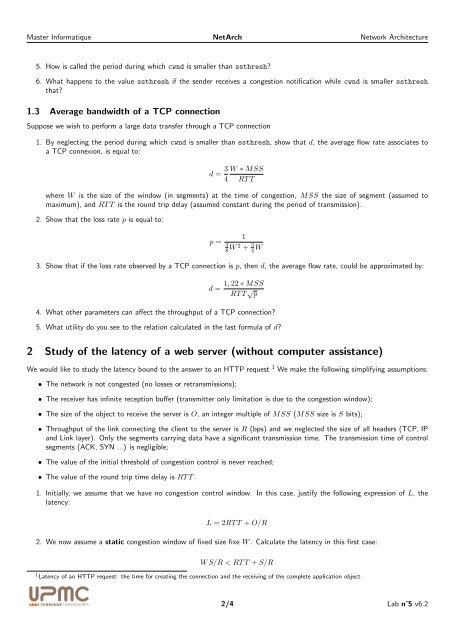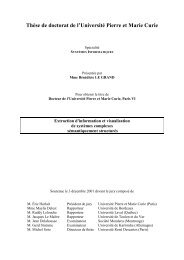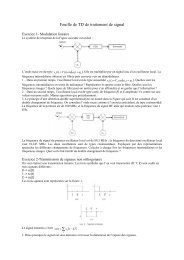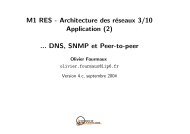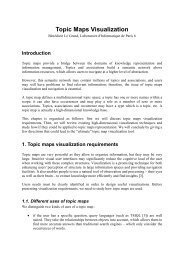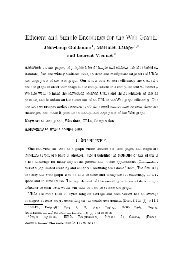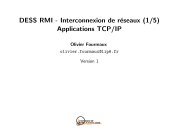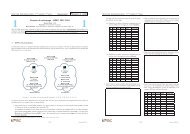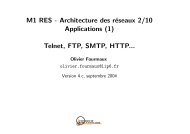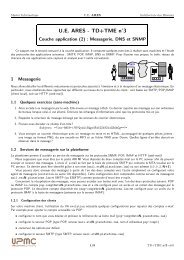NetArch - Lab nË5 - LIP6
NetArch - Lab nË5 - LIP6
NetArch - Lab nË5 - LIP6
Create successful ePaper yourself
Turn your PDF publications into a flip-book with our unique Google optimized e-Paper software.
Master Informatique <strong>NetArch</strong> Network Architecture<br />
5. How is called the period during which cwnd is smaller than ssthresh?<br />
6. What happens to the value ssthresh if the sender receives a congestion notification while cwnd is smaller ssthresh<br />
that?<br />
1.3 Average bandwidth of a TCP connection<br />
Suppose we wish to perform a large data transfer through a TCP connection<br />
1. By neglecting the period during which cwnd is smaller than ssthresh, show that d, the average flow rate associates to<br />
a TCP connexion, is equal to:<br />
d = 3 W ∗ MSS<br />
4 RT T<br />
where W is the size of the window (in segments) at the time of congestion, MSS the size of segment (assumed to<br />
maximum), and RT T is the round trip delay (assumed constant during the period of transmission).<br />
2. Show that the loss rate p is equal to:<br />
1<br />
p =<br />
3<br />
8 W 2 + 3 4 W<br />
3. Show that if the loss rate observed by a TCP connection is p, then d, the average flow rate, could be approximated by:<br />
d =<br />
1, 22 ∗ MSS<br />
RT T √ p<br />
4. What other parameters can affect the throughput of a TCP connection?<br />
5. What utility do you see to the relation calculated in the last formula of d?<br />
2 Study of the latency of a web server (without computer assistance)<br />
We would like to study the latency bound to the answer to an HTTP request 1 We make the following simplifying assumptions:<br />
• The network is not congested (no losses or retransmissions);<br />
• The receiver has infinite reception buffer (transmitter only limitation is due to the congestion window);<br />
• The size of the object to receive the server is O, an integer multiple of MSS (MSS size is S bits);<br />
• Throughput of the link connecting the client to the server is R (bps) and we neglected the size of all headers (TCP, IP<br />
and Link layer). Only the segments carrying data have a significant transmission time. The transmission time of control<br />
segments (ACK, SYN ...) is negligible;<br />
• The value of the initial threshold of congestion control is never reached;<br />
• The value of the round trip time delay is RT T .<br />
1. Initially, we assume that we have no congestion control window. In this case, justify the following expression of L, the<br />
latency:<br />
L = 2RT T + O/R<br />
2. We now assume a static congestion window of fixed size fixe W . Calculate the latency in this first case:<br />
W S/R < RT T + S/R<br />
1 Latency of an HTTP request: the time for creating the connection and the receiving of the complete application object.<br />
2/4 <strong>Lab</strong> n˚5 v6.2


